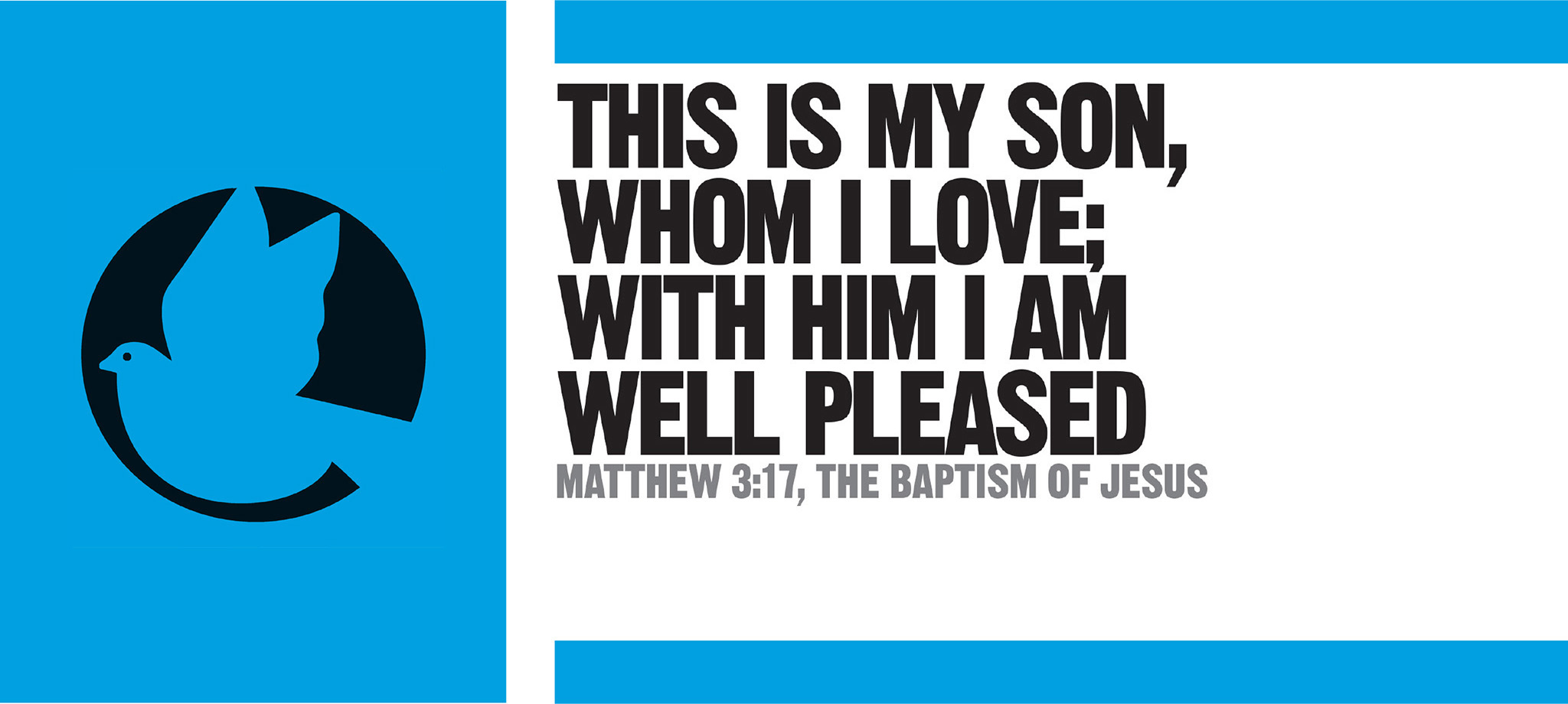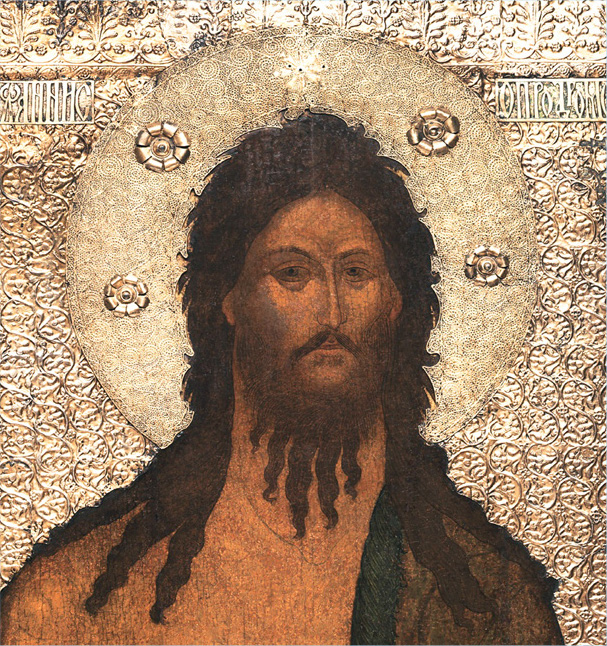
IN BRIEF
Matthew 3:13–17
The beginning of Christ’s ministry
c.26–27 CE Judean countryside, alongside the River Jordan.
Jesus The Messiah and Son of God, who travels from Galilee to the River Jordan to be baptized by John and commence His ministry.
John the Baptist A dedicated holy man and preacher who baptizes Jesus, then steps aside to make way for His ministry.
Near the beginning of the Gospel according to Matthew, at the start of the New Testament, Jesus undergoes a baptism (ritual washing by immersion in water) at the hands of a man named John the Baptist. Such is the significance of this event—because it marks the beginning of Jesus’s ministry—that it is mentioned in all four Gospels of the New Testament. In addition to Matthew 3, referenced here, Mark 1 and Luke 3 both give full details of the baptism, while in John 1, it is discussed in passing. According to Luke (3:23), Jesus is about 30 years old at the time of the baptism. He travels to the River Jordan from Galilee to meet with John. The latter has gained a reputation for the act—exhorting local people to confess and repent of their sins, and then washing them clean in the water of the river.
When the two men first meet, John is surprised by Jesus’s request to be baptized, because he knows that Jesus is the Messiah. John exclaims: “I need to be baptized by You, and do You come to me?” (Matthew 3:14). Reassured by Jesus that there is no mistake, John then lowers Jesus into the waters and baptizes Him.

Purpose of the act
Biblical scholars have long debated the precise significance of this event, since the stated purpose of John’s baptism is a “baptism of repentance for the forgiveness of sins” (Mark 1:4). However, as the New Testament confirms, Jesus was completely without sin—Paul writes in 2 Corinthians 5:21 that “God made Him who had no sin to be sin for us.” Jesus therefore has nothing to repent for, yet still asks for baptism. The general consensus is that, in this case, the act of cleansing is merely symbolic. Some scholars debate whether or not John knew before he baptized Him that Jesus was the Messiah. According to Luke’s account, as Jesus comes up out of the river, the heavens above Him open and “the Holy Spirit descended on Him in bodily form like a dove” (Luke 3:22). A voice from heaven simultaneously booms out: “This is my Son, whom I love; with Him I am well pleased” (Matthew 3:17). John’s Gospel suggests John did not know who was in front of him until he saw the dove: “And I myself did not know Him, but the one who sent me to baptize with water told me, ‘The man on whom you see the Spirit come down and remain is the one who will baptize with the Holy Spirit’” (John 1:33). John claims to have decided to baptize Jesus simply because then the man “might be revealed to Israel” (1:31).
The affirmations of God and John the Baptist, made in front of the witnessing crowd, both confirm that Jesus is the Son of God and the Messiah. He is symbolically cleansed in order to commence His ministry and is now ready to encounter the forces of darkness. Immediately after the baptism, Jesus goes into the desert, where He fasts for 40 days. Here, He is tempted by Satan (Matthew 4), in a series of tests that resonate with universal human desires and concerns. Jesus maintains His resolve—His baptism has been successful—and He returns to society to begin preaching to the people and working miracles.
“He will baptize you with the Holy Spirit and fire.”
Matthew 3:11

John the Baptist

Like Jesus, John the Baptist is born in miraculous circumstances. In Luke (1:5–23), an angel of the Lord visits Zechariah, an aged priest, and his barren wife Elizabeth. He announces that they will have a son and that he will become a great man of God. Such is Zechariah’s disbelief at this revelation—owing to their age—that God strikes him dumb.
Zechariah recovers his speech when Elizabeth gives birth to their son, John. Luke confirms that the birth occurs just months prior to that of Jesus (1:36). John becomes a preacher, living an austere and hermitic life in the desert. He preaches a message advocating both confession and repentance, and offers baptism in the River Jordan to all who heed him. John speaks, above all, of a “greater one” who will come after him—the Messiah prophesied in the scriptures.
John’s preaching ultimately leads to his downfall, when he warns King Herod against marrying his brother’s wife. The king marries her anyway, but she never forgives John, and John is eventually beheaded on the whim of her daughter, Salome.

Historical ramifications
The baptism of Jesus is one of five key events in the Gospel narrative of the life of the Messiah. The other four are: the Transfiguration; the Crucifixion; the Resurrection; and Jesus’s Ascension into heaven. Nearly all denominations of Christianity celebrate the event, and the baptism of Jesus shaped the Christian rite of baptism that is practiced worldwide to this day.
The majority of theologians assign a high degree of certainty to the actuality of Jesus’s baptism, using it as a starting point from which to assert Jesus’s historicity. It is also highly likely, based on historical records, that John the Baptist lived at the same time as Jesus. The 1st-century historian Flavius Josephus attested to the existence of John the Baptist at the same time as Jesus in his work Antiquities of the Jews. He stated that John’s ministry began around 28–29 CE, shortly before that of the Messiah, and most modern theologians accept this view.
Once he has baptized Jesus, John the Baptist’s popularity as a preacher begins to wane. This is largely due to people beginning to follow Jesus instead of him. John’s response to this change in his circumstances is typical of his renowned humility, as well as affirming his role as a precursor to Christ. In John 3:30, John states: “He [Jesus] must become greater; I must become less.”

Holy waters
Most scholars agree that the baptism took place near the Jordan River, in the countryside of Roman Judea. Some accounts suggest that the immersion was conducted in one of the many desert springs or waterholes in the area, rather than in the river itself. Specific references in the book of John point to the town of Bethany on the eastern bank of the Jordan River, near Jericho (1:28), or to the settlement of Aenon near Salim “because there was plenty of water, and people were coming and being baptized.” (3:23).
Given the meaning of the word baptize—“to dip”—many Christian denominations insist upon baptism by total immersion, often three times, to symbolize Jesus’s death and resurrection; others favor sprinkling or pouring to represent the Holy Spirit descending from above. Some Christians believe that baptism is a sacrament that is necessary for salvation; other groups, such as Lutheran Protestants, associate baptism with spiritual regeneration.
“Heaven was opened and he saw the Spirit of God descending like a dove.”
Matthew 3:16
Baptism

The Christian rite of baptism—which consists of sprinkling or pouring water on a person’s forehead or immersing them in water—symbolizes spiritual and physical purification. The rite of baptism confers an individual’s admission to the Christian Church. Before His Ascension, Jesus bids his disciples to “make disciples of all nations, baptizing them” (Matthew 28:19).
In many denominations, baptism is performed on very young children, accompanied by name giving. The doctrine of original sin, propounded by St. Paul and developed by the early Church, made the baptism of infants, who might die suddenly or unexpectedly, of vital importance. The early church frowned upon the practice of “baptism of the dead,” in which a living person was baptized on behalf of the deceased.
Today, some Christian denominations, including Baptists, do not baptize children, on the grounds that the basis for baptism is a credible profession of faith. Other groups, including Quakers, view baptism as an unnecessary ritual.
See also: The Temptations of Christ • The Transfiguration • The Crucifixion • The Empty Tomb • The Great Commission
